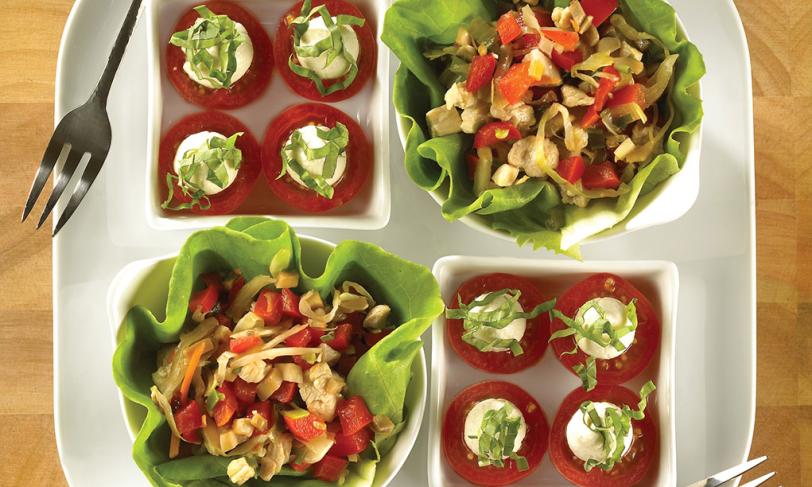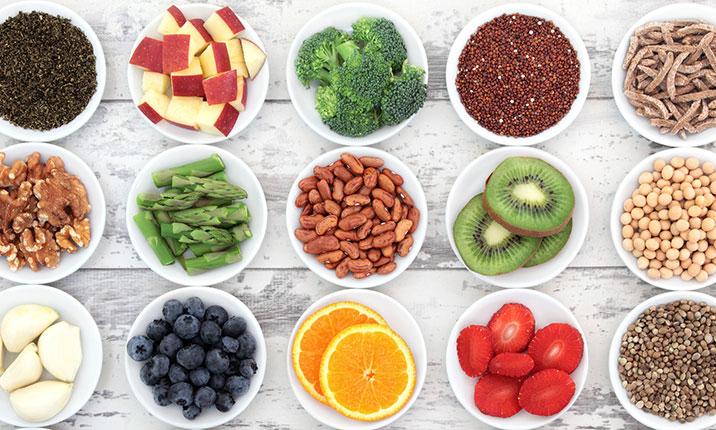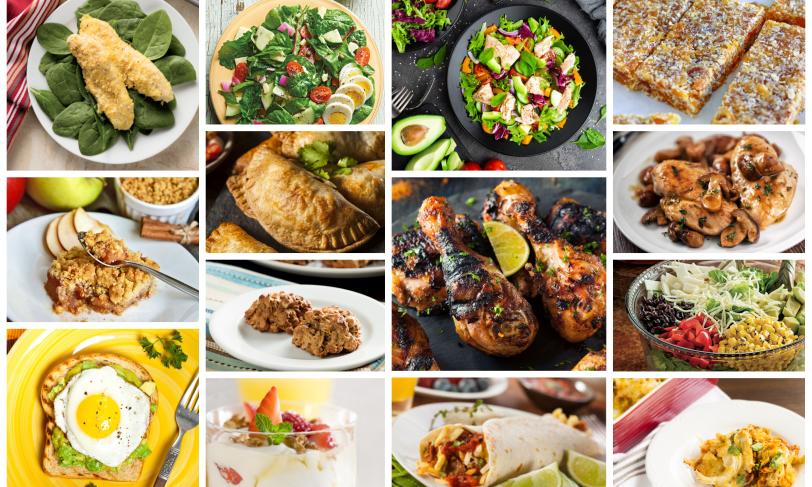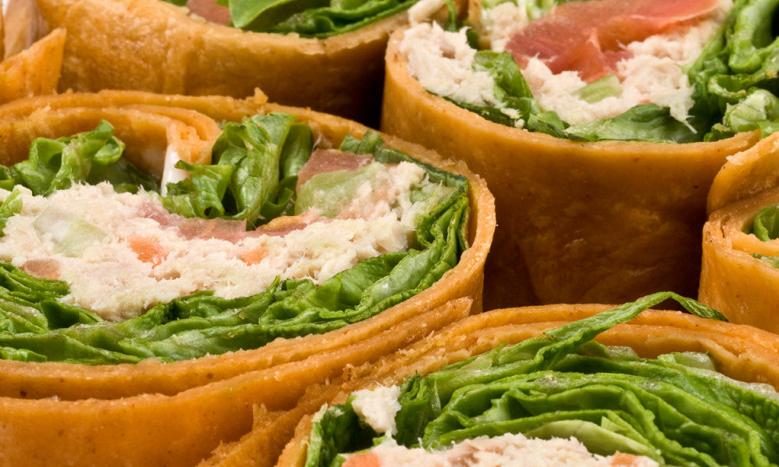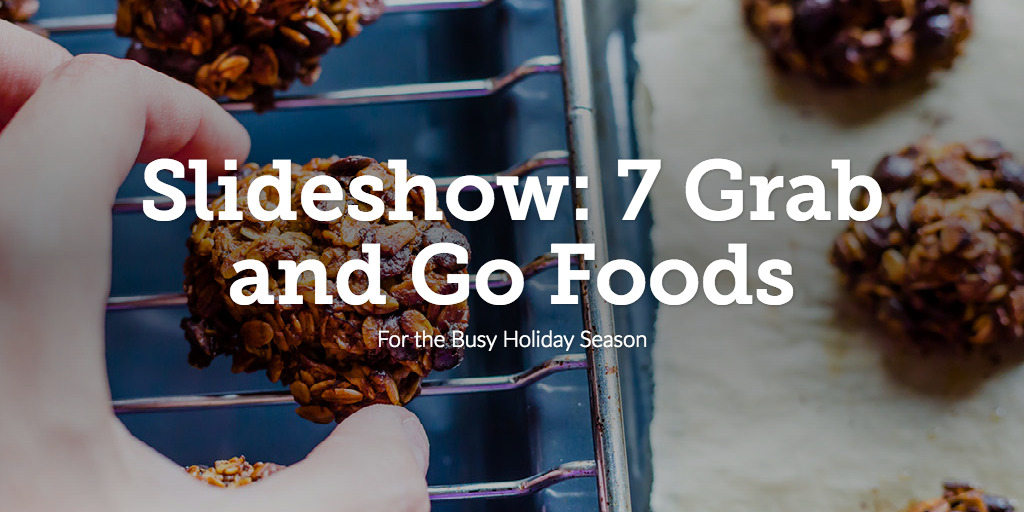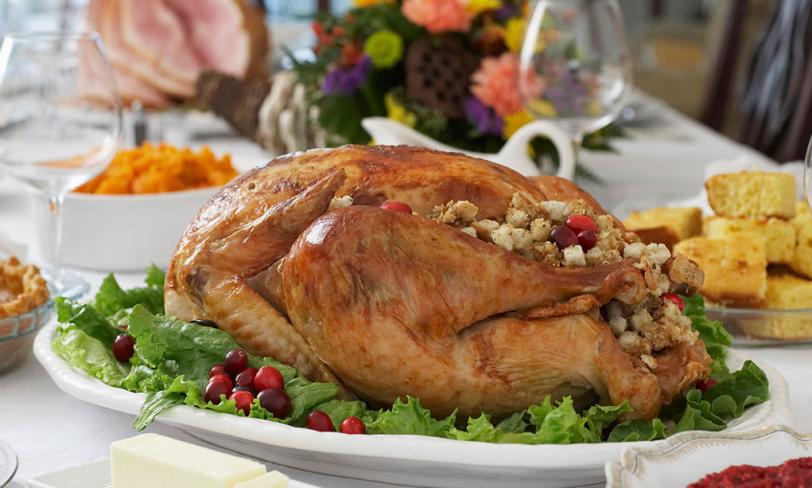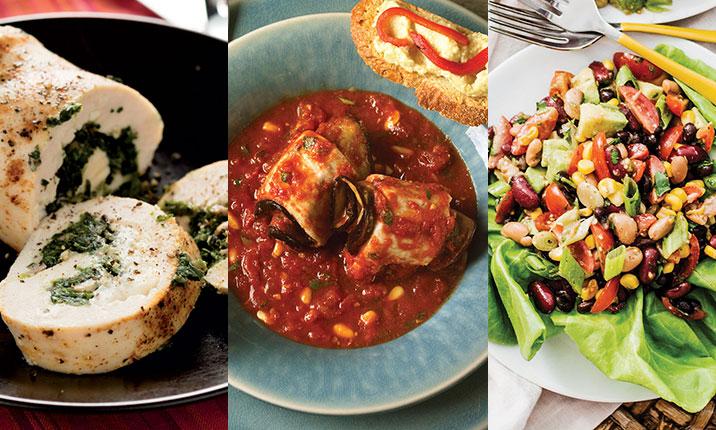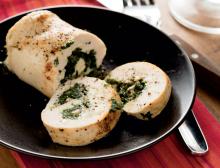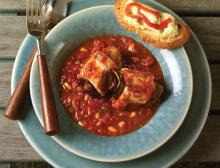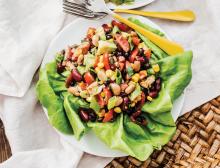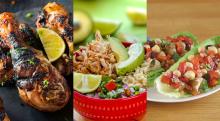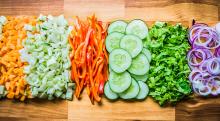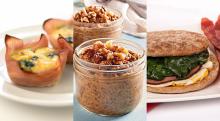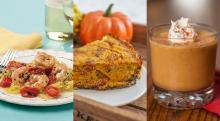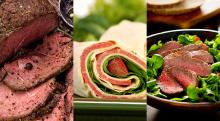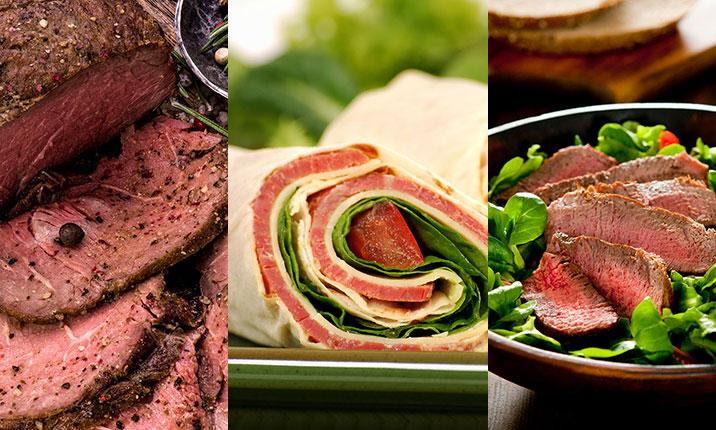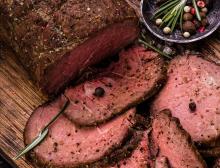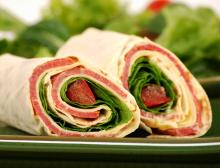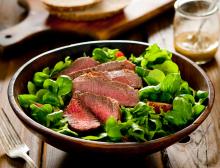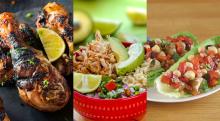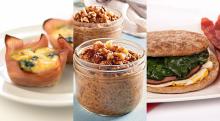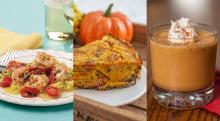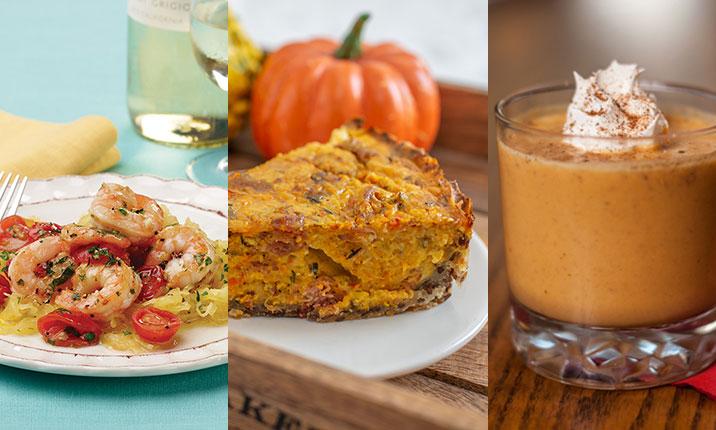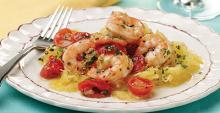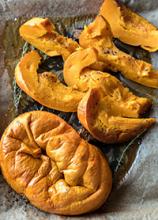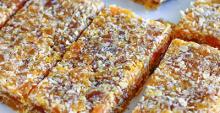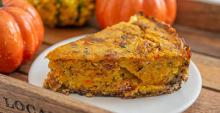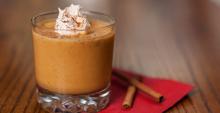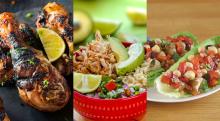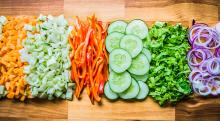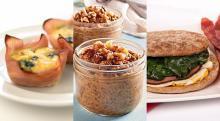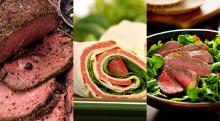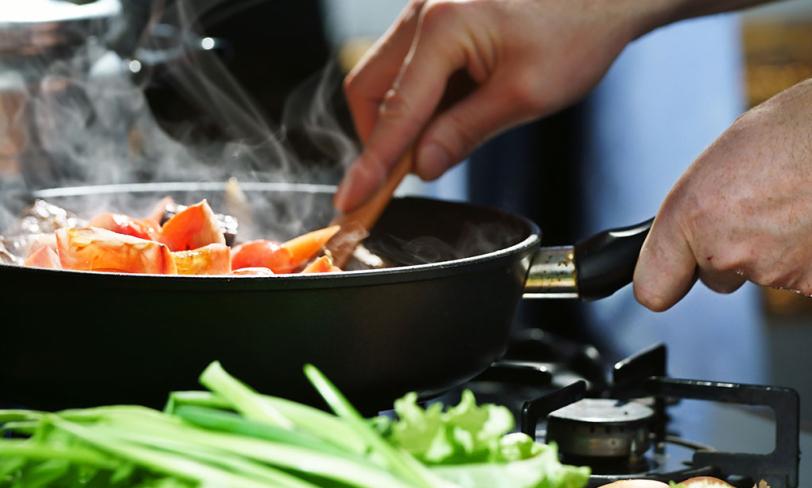Ever notice that most recipes make four or more servings? This makes planning diabetes-friendly meals for just one or two people a challenge. Sure, you can eat leftovers, but eating the same meal several days in a row can get boring. And simply cutting recipes in half doesn’t always work. Well, Diabetes Food Hub has just what you need! We have tons of recipes designed for one or two people. Below is a round up of three full meals that will have you wasting less and enjoying more.
Each of these recipe makes two servings, perfect for a meal for two! Or, if you are cooking for one, save the leftovers for lunch the next day. Best of all, these meals come together in less than thirty minutes, so you can have a hassle-free, diabetes-friendly dinner for two any night of the week!
Barbecued Rosemary Chicken with Spinach and Orange Salad
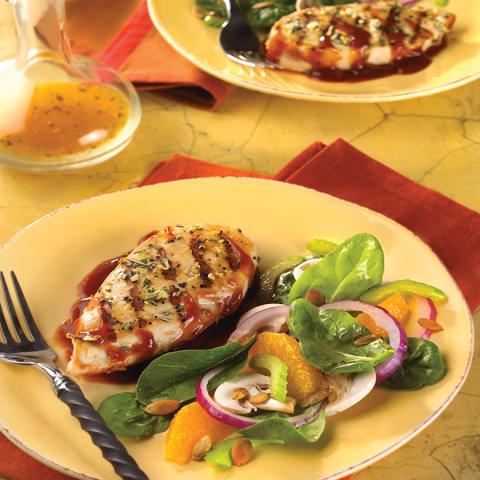
Our Barbecued Rosemary Chicken recipe takes classic barbecued chicken and spices it up with some fresh rosemary. Pair it with our Spinach and Orange Salad for a diabetes-friendly meal that is bursting with fresh flavors.
Crustless Spinach and Mushroom Quiche with Quick Herb-Tomato Soup
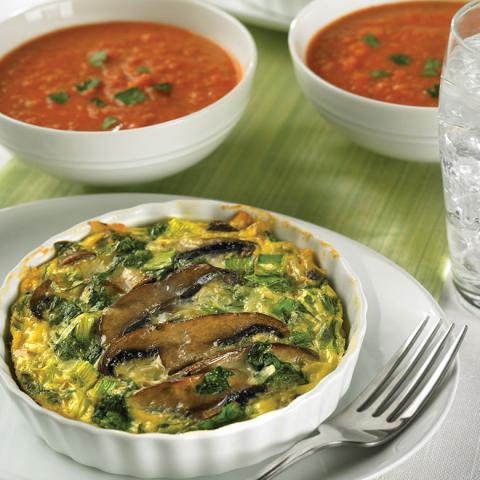
This Crustless Spinach and Mushroom Quiche features meaty portabella mushrooms that will satisfy both vegetarians and meat-eaters alike. Pair with our Quick Herb-Tomato Soup that you can whip up while the quiches bake. This soup takes only minutes to cook, but gets a rich flavor and texture from our secret ingredient, roasted garlic hummus.
Salmon and Asparagus Gremolata with Sweet and Creamy Corn
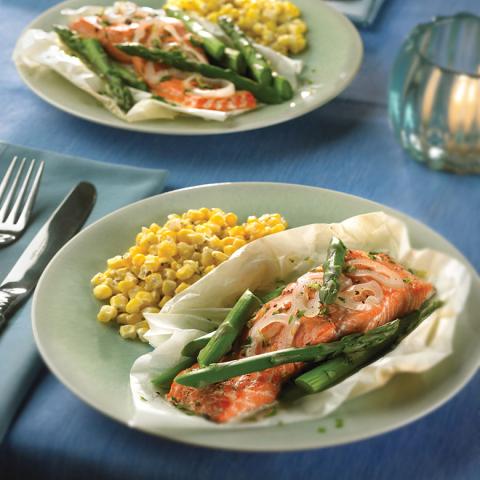
This Salmon and Asparagus Gremolata sounds fancy, but is incredibly easy to prepare. The salmon and veggies are cooked together in a parchment (or foil) packet, making clean-up a breeze as well. Pair with a side of Sweet and Creamy Corn that you can prepare while the fish cooks. This whole meal goes from pantry to plate in less than 30 minutes!
Fruit-Filled Pancake Puffs

If you saved room for dessert, try this Fruit-Filled Pancake Puff as a light and refreshing treat to satisfy your sweet tooth! This recipe calls for fresh berries and berry yogurt, but you could use any seasonal fruit and get creative with the yogurt topping.
